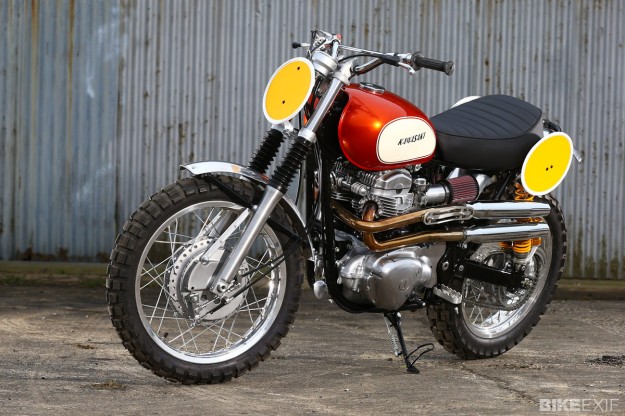
It’s comforting to know that even TV stars and retired former race aces aren’t immune to the project bike disease. That’s why former Grand Prix, World Superbike and World Supersport racer James Whitham has spent the last 15 months of his limited spare time building his take on the street tracker concept.
Based on an ageing W650 twin—Kawasaki’s rival to Hinckley’s revived Bonneville—Whitham’s tracker is the epitome of stripped-down, pared-back style. Without such fripperies as lights or indicators, the bike is his vision of how a bike should be—simple fun.
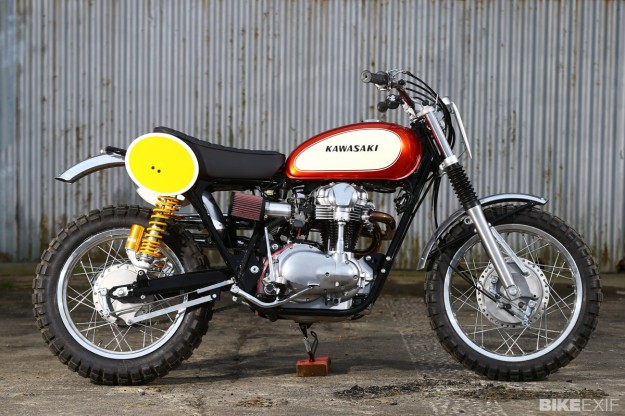
“My mate Jamie Lodge and I have built a matching pair—though his is green,” James says. “We were looking at some photos from a Japanese bike show on the web; the whole retro thing is huge over there. We thought it would be good to build something that looked really old school.”
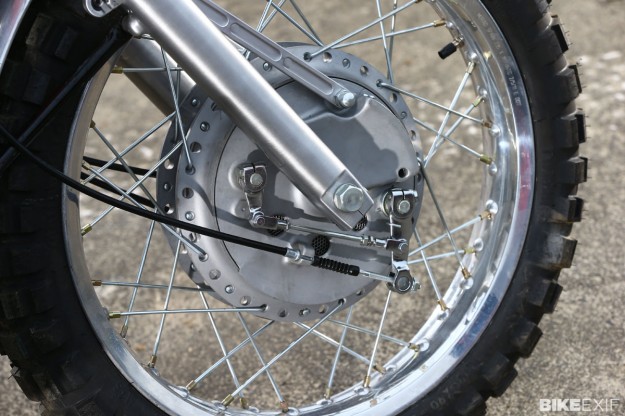
James and Jamie stated with a pair of early Kawasaki W650s and went from there. “Mine cost me £1,200,” says James. “The whole build was about the look, but we wanted to be able to ride them when we were finished. I’ve just got to sort out a continuous-tone horn and a number plate for mine before it goes for the annual test. I suppose I’ll have to fit a number plate, because I’m bound to get pulled over every time I go out. I might even get a photocopy of the regulations regarding lights, reflectors and so on, to have in my pocket—I’ll be getting into all sorts of arguments.”
The frame and swingarm have been shorn of unnecessary bracketry. “Even the center stand brackets have gone,” James confirms. “I wanted it as clean and as functional as possible. I’ve splashed out on Öhlins shocks that are about 40mm longer than the stock units. That should quicken up the steering a bit, and they give the bike a more aggressive stance.”
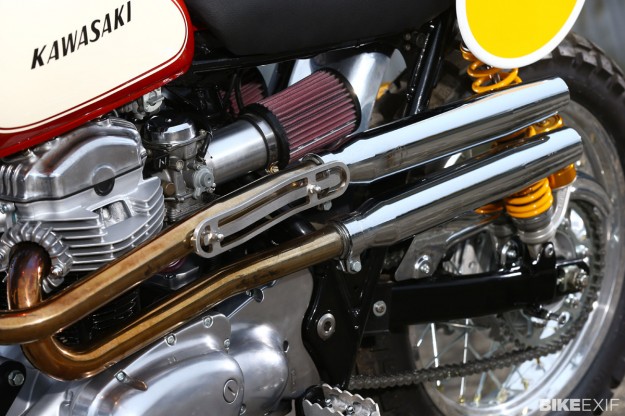
James also wanted a twin-leading-shoe front brake in place of the Kawasaki disc. “We’ve used early Suzuki GT750 drums on both bikes,” says James.
“I paid £500 for mine—it’s probably the most expensive single item on the bike. I’ve used GT750 cables and levers with it, but the main problem was fitting the Suzuki hub between the Kawasaki forks—it’s too wide. I got talking to Tom Sykes’ [reigning World Superbike champion] granddad, Pete Brook. He made custom spindles and machined the center boss of the brake plates down to fit. That was the hard job, because there’s not much on the brake plate to mount to the lathe. Rest assured, the brake doesn’t work worth a light—but it looks great.”
James has left the engine standard, though he’s polished the engine cases himself, before lacquering them. Brook also fabricated the carb manifolds and James and Jamie have both used K&N pod filters. But sorting out a suitable exhaust system had the pair scratching their heads for a bit.
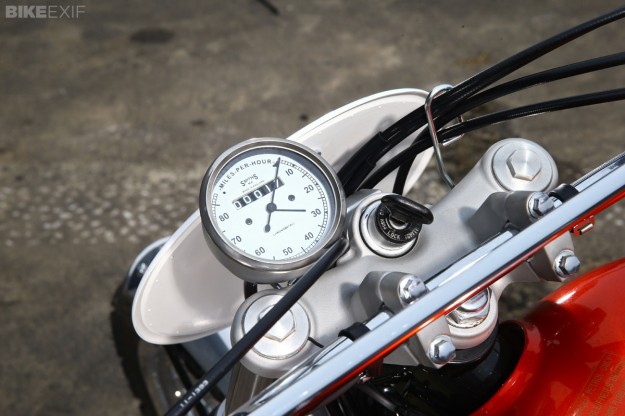
“We got lucky in the end,” James admits. “Somebody put me on to a local guy, Michael Stott, who makes architectural stainless steel fittings for houses. He’s a motorcyclist, too, so he agreed to have a go. He bought pre-formed bends and put a couple of systems together—the pipes make the bikes.
“With the seats we cut the base to the shape we wanted on a bandsaw,” says James, simply. “The seat base is plastic, so it was easy enough. A lad Jamie knows made up the required foam and seat covers.”
Whit admits to getting lucky with the fuel tank. “It’s got to be right, hasn’t it? My old mechanic, Butch, put me on to a guy in Immingham who filled and fettled the tanks and used proper 1970s Kawasaki colors on them. Mine is Burnt Orange and Jamie’s is Lime Green. He’s done a stunning job.”
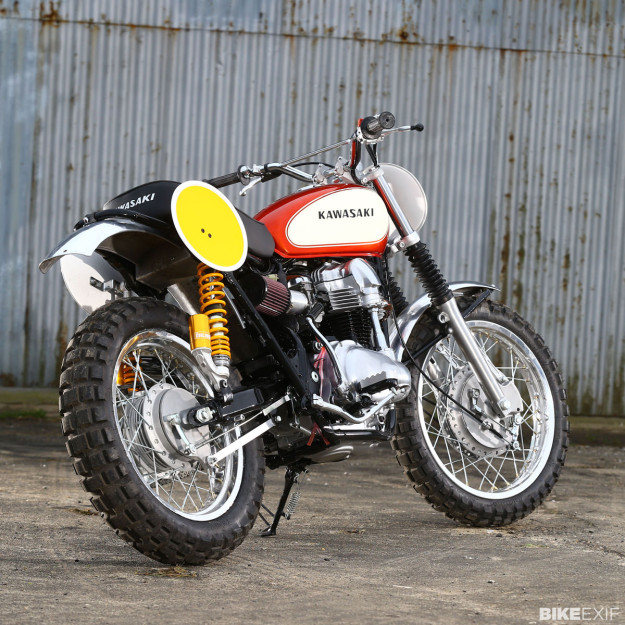
Like the true Yorkshireman he is, though, James is proud of some of the details that haven’t cost a fortune. “Take the clocks,” he says, proudly. “They look a lot like genuine Smiths clocks, but they’re from India and cost something like £17 on ebay.”
Overall, Whit is pleased with the results of his labors. “I’ve piggy-backed on Jamie a lot,” he says. “He’s done most of the running around and faffing about. Really, the bikes are about standing back and thinking about how great they look, but they’re not for display—they were both built to ride.”
Courtesy of Classic Bike magazine. Images by Chippy Wood.